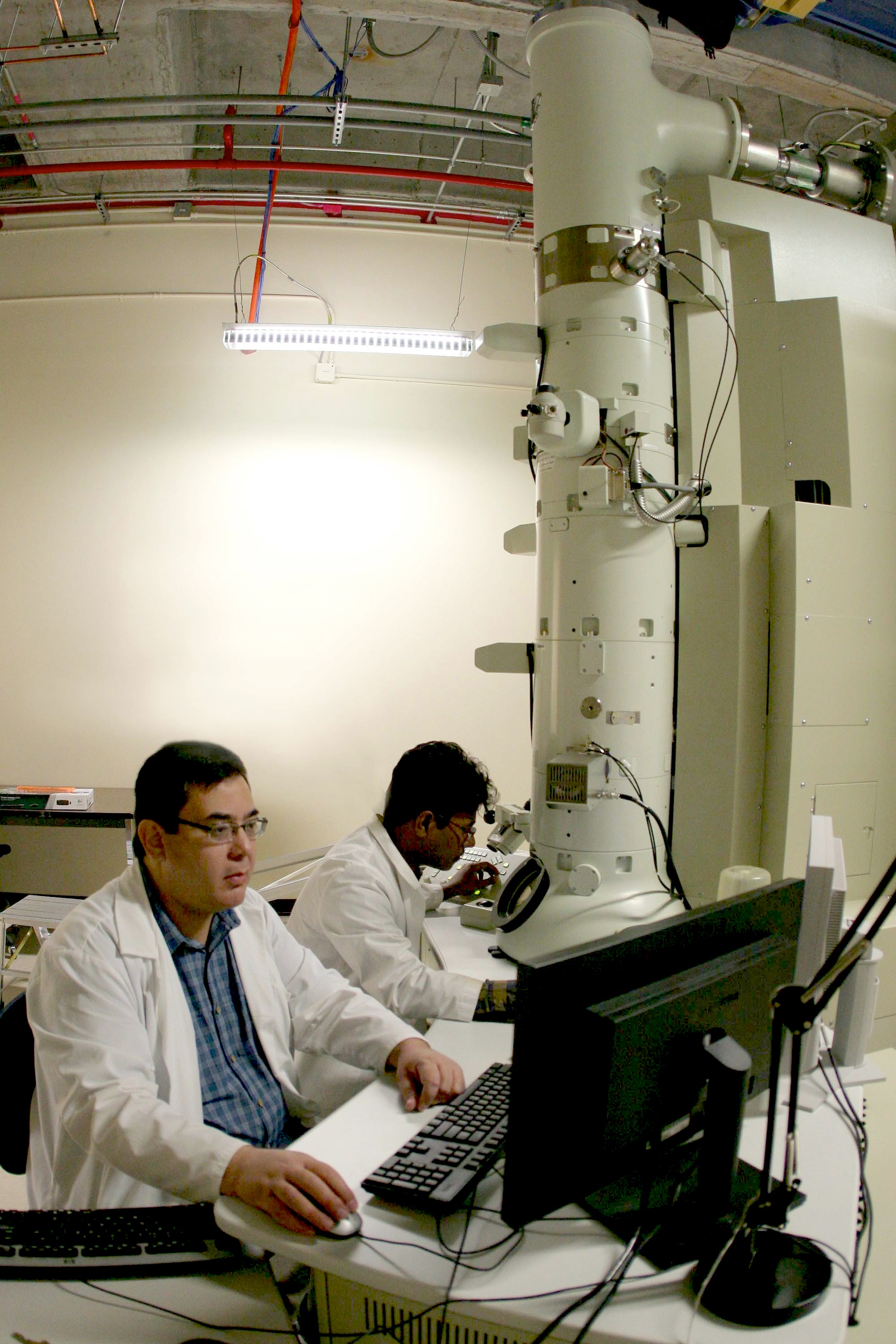Using a nearly $2 million microscope known as the cryo-electron microscope (cryo-EM), Bernal and Sudheer Molugu, the cryo-EM facility manager, are taking thousands of images of chaperonins to try to generate 3-dimensional reconstructions of them.
“Chaperonins help proteins fold, and we want to know what that process looks like,” Bernal said. “When a protein misfolds, chaperonins will salvage it and aid in the folding process so it folds into its proper structure.”
To get the images, Molugu freezes samples of chaperonins with liquid nitrogen then inserts them into the microscope to take pictures.
“The proteins are frozen into the ice in many random orientations – so that’s where high performance computing comes in,” Bernal said. It’s the computers job to determine the orientation of every protein relative to every other protein. The computer then averages the thousands of images together to ultimately figure out what the 3-D structure looks like.
If the team can figure out what the structures look like and the mechanism by which chaperonins fold proteins correctly, they can apply the information to address any diseases associated with chaperonins.
“There are diseases that have been loosely associated with these,” the biochemist said. “Cancer is one of them.”
Once Bernal figures out exactly how chaperonins work, he plans to identify how diseases associated with the proteins develop.
In the future, the team may be able to figure out how to control the proteins to hinder the onset of particular diseases.
